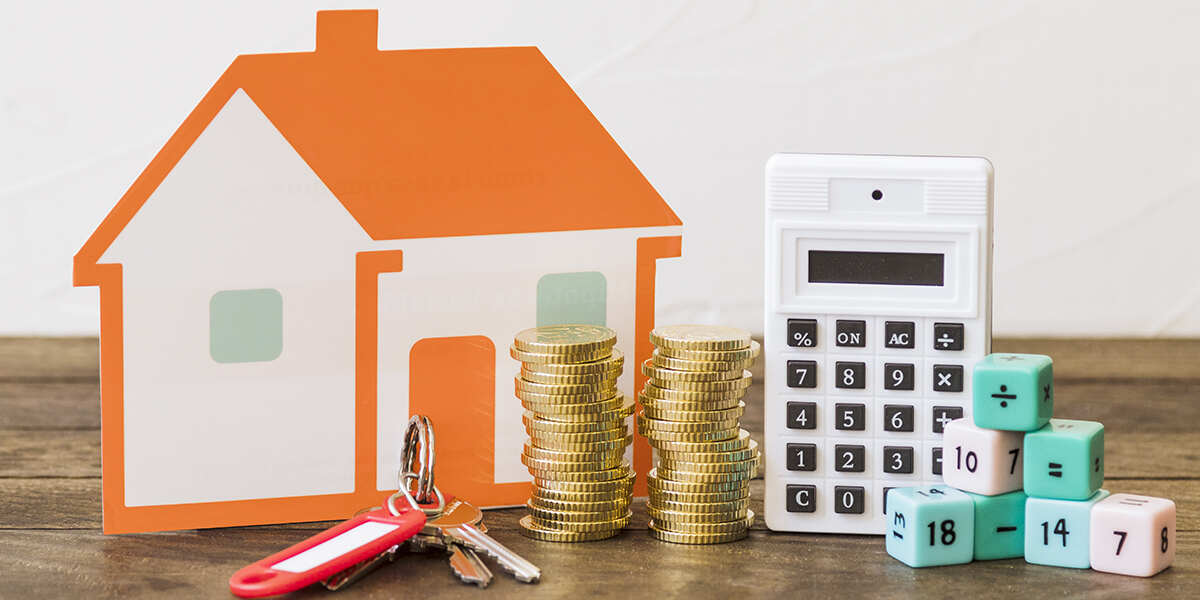Buying a home is an exciting step, but it can also be tricky, especially when it comes to paying for it. A fixed-rate mortgage is one way many people choose to finance their homes. Grasping how to afford this type of mortgage is important. This article will share practical tips to help you manage your payments and make your dream home a reality. Let’s look at how to stay on track financially while enjoying homeownership!
Understanding the 30-Year Fixed Mortgage
A 30-year fixed mortgage offers stability with a set interest rate throughout the loan’s life, helping borrowers easily plan their budget. Monthly mortgage payments remain the same, making it easier to manage housing expenses. This predictability can benefit those with student loans or other debts, as it allows for effective financial decisions to maintain a low debt-to-income ratio.
Lower mortgage rates increase affordability, but borrowers should watch their credit score, since a better scoremay secure a lower rate. When choosing a mortgage, down payment size is important; larger down payments can eliminate mortgage insurance costs like PMI. Potential buyers must also consider the total costs of owning a home, including closing costs and property taxes, which can impact their overall budget. A mortgage calculator can help first-time buyers estimate their monthly payments based on purchase price and loan terms.
Understanding these elements aids in gaining equity and ensuring that the mortgage aligns with personal finance goals over 30 years.
Analyzing the Average 30-Year Fixed Mortgage Rate
Fluctuations in the average 30-year fixed mortgage rate are influenced by several factors, including supply and demand for loans, government policies, and global economic conditions. When lenders notice an increase in demand for home loans, this can lead to higher mortgage rates. These rates significantly impact homebuyers’ purchasing decisions. For instance, a lower mortgage rate results in lower monthly payments, enabling buyers to afford a higher purchase price.
Conversely, higher rates can strain budgets, making homes less affordable. Economic indicators like inflation and unemployment rates also have an impact. High inflation may prompt lenders to increase interest rates to maintain profitability. This, in turn, affects borrowers, as they might need to adjust their budget for housing expenses. A debt-to-income ratio remains important for these financial decisions, as lenders typically prefer ratios below 36%.
Additionally, if a buyer has student loans or other debts, their credit score and ability to secure favorable mortgage rates and even avoid PMI may be influenced, affecting overall affordability. Understanding these factors can help first-time buyers better navigate the process of buying a home.
Determining the Right Time to Buy a Home
When buying a home, several financial indicators help determine the right moment. People should look at their debt-to-income ratio, which compares total monthly debt to gross monthly income. Lenders typically prefer a ratio below 41%. They should also assess their credit score, as a higher score can lead to better mortgage rates and lower monthly payments. Current mortgage rates are important; lower rates boost affordability, while higher rates increase housing expenses.
Evaluating down payment options is also significant since a larger down payment can reduce monthly payments and eliminate mortgage insurance (PMI).
Market trends can greatly affect decision-making. If mortgage rates rise, potential buyers might hesitate, hoping for rates to drop. Similarly, if home prices increase, it can alter the budget and affordability. Personal circumstances can play a big part in these financial decisions. A first-time buyer should assess their job stability, existing debt like student loans, and overall savings. They must also consider closing costs, which add to the purchase price. A mortgage calculator can help estimate future mortgage payments and costs, guiding their overall financial planning.
Exploring the Pros and Cons of a 30-Year Fixed Mortgage
A 30-year fixed mortgage offers predictable monthly payments, making it easier for buyers to budget their housing expenses. With a fixed interest rate, borrowers can shield themselves from rising mortgage rates and maintain their purchasing power over time. However, higher closing costs may be needed upfront, which can affect down payment funds.
Borrowers should also consider the debt-to-income ratio, especially if they have other debts like student loans, as lenders often prefer a DTI below 36%. While the low monthly payments can improve affordability, the long commitment of a 30-year loan might limit future financial decisions—making it challenging to save for other goals or to build equity quickly. First-time buyers might struggle with mortgage insurance if their down payment is under 20%, adding to monthly costs.
Comparing 30-Year Fixed vs. 15-Year Fixed Mortgages
A 30-year fixed mortgage typically has lower monthly payments compared to a 15-year fixed loan. This allows borrowers to manage their monthly obligations while also covering other housing expenses, such as property taxes and mortgage insurance. However, the long-term costs associated with a 30-year mortgage tend to be higher due to the extended repayment period, resulting in more interest payments over time.
For instance, if the mortgage rate is 4%, the total interest paid on a 30-year fixed loan can be significantly more than on a 15-year loan, even if both loans start with the same purchase price. A 30-year fixed loan may be suitable for first-time buyers needing lower payments to fit within their budget and manage their debt-to-income ratio effectively, especially if they have student loans or other debts. Conversely, those who can afford higher monthly payments might benefit from a 15-year fixed mortgage, allowing them to build equity faster while minimizing long-term costs.
A mortgage calculator aids borrowers in assessing these financial decisions.
Utilizing a Mortgage Comparison Calculator
Individuals can use a mortgage comparison calculator to explore various options for a 30-year fixed mortgage by entering their desired purchase price, down payment, and current mortgage rates. By comparing different loan scenarios, they can observe how factors like interest rates and credit scores influence their monthly mortgage payments.
Important factors to consider when entering data include the debt-to-income ratio, which assists lenders in determining how much the buyer can afford, and any existing debt, such as student loans. If the down payment is low, it’s valuable to include potential expenses like property taxes and mortgage insurance, including PMI, as these impact monthly budgets. A mortgage comparison calculator can indicate potential savings by demonstrating how different interest rates and discount points affect the overall cost of the loan over time.
Users can see how larger down payments might decrease mortgage payments, facilitating smarter financial choices and increasing equity in the home. Taking into account all expenses, including closing costs, supports a clearer understanding of overall affordability and aids first-time buyers in effectively planning for home purchases.
Dos and Don’ts in Your Mortgage Search
Homebuyers should start by assessing their budget, which includes looking at monthly income, current debts, and potential housing costs. A solid initial step is to calculate the debt-to-income ratio to keep it below 36%. Improving their credit score is important, as higher scores can result in better mortgage rates. When deciding on a down payment, opting for a larger sum can decrease monthly mortgage payments and remove the requirement for PMI.
Steering clear of common mistakes is necessary; buyers should not ignore additional expenses like closing costs, which generally range from 2-5% of the purchase price. They should be wary of accumulating too much debt, particularly if student loans affect their loan qualification.
To assess various mortgage choices, a mortgage calculator can clarify how interest rates influence monthly payments. Buyers should compare the overall costs across diverse loans, including the 30-year fixed option, to secure favorable rates. Considering discount points can also be beneficial in reducing interest rates, simplifying long-term financial decisions, and upholding sound personal finance habits.
FAQ
What are some effective budgeting strategies to manage monthly fixed-rate mortgage payments?
Create a dedicated savings account for mortgage payments, set up automatic transfers after each paycheck, and prioritize budgeting categories. Use a zero-based budgeting approach by allocating all income to expenses, including a buffer for unexpected costs. Consider refinancing for a lower rate if possible.
How can I minimize additional costs associated with my fixed-rate mortgage?
To minimize additional costs on your fixed-rate mortgage, consider making extra payments toward the principal, refinancing for a lower rate, or setting up automatic payments to avoid late fees. Additionally, review your homeowners’ insurance and taxes annually to ensure you’re not overpaying.
What should I consider when choosing the right term length for my fixed-rate mortgage?
Consider your budget, lifestyle, and financial goals. Shorter terms provide lower interest rates and quicker equity build-up but higher monthly payments. For example, a 15-year mortgage may suit those prioritizing savings on interest, while a 30-year mortgage is better for lower payments and cash flow flexibility.
Are there any assistance programs available to help me afford my fixed-rate mortgage?
Yes, there are assistance programs available. Look into FHA loans, HARP refinancing, or state-specific programs like down payment assistance. Nonprofits and local housing agencies can also offer resources. Check with your lender for tailored options based on your financial situation.
How can refinancing my fixed-rate mortgage help me save money in the long run?
Refinancing to a lower interest rate can reduce your monthly payments. For example, if you save 1% on a $200,000 mortgage, you could save over $20,000 in interest over 30 years. Additionally, consider shortening your loan term to build equity faster and pay less interest overall.
Make affording your fixed-rate mortgage easier with tips and tricks from Champions Mortgage. Learn strategies for improving your credit score, saving for a down payment, and budgeting effectively to manage your monthly payments. Contact us today for personalized advice on making your fixed-rate mortgage more affordable.







